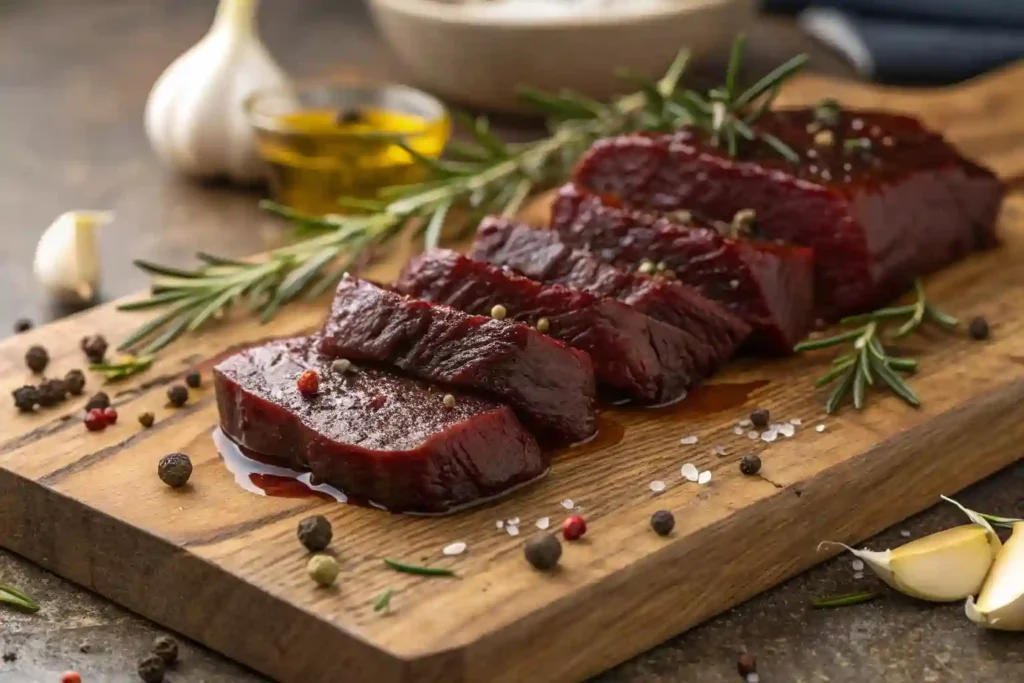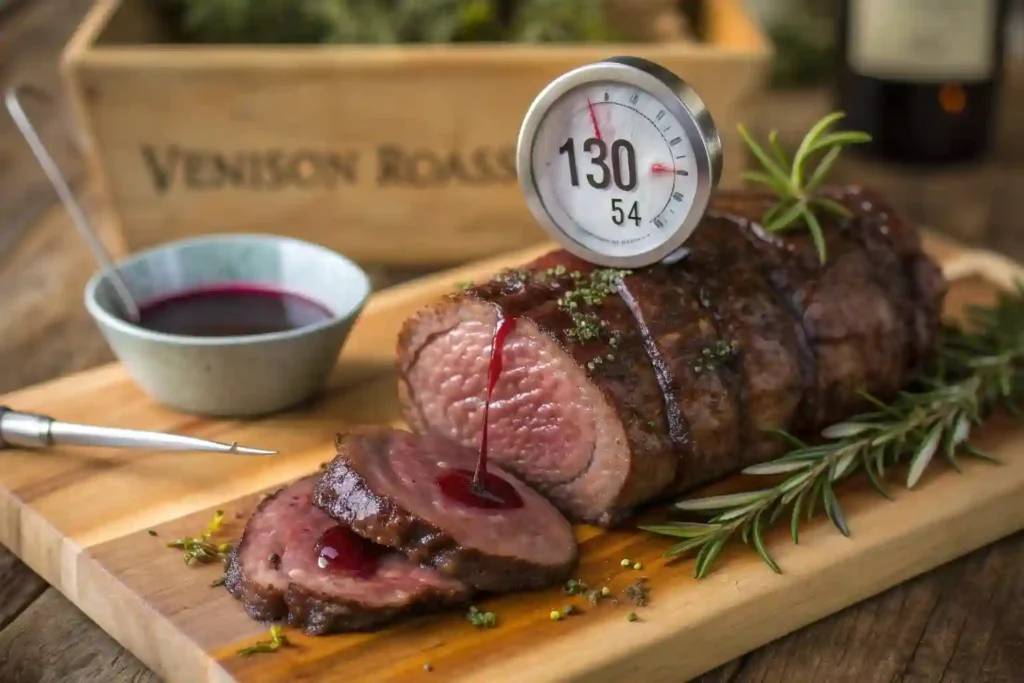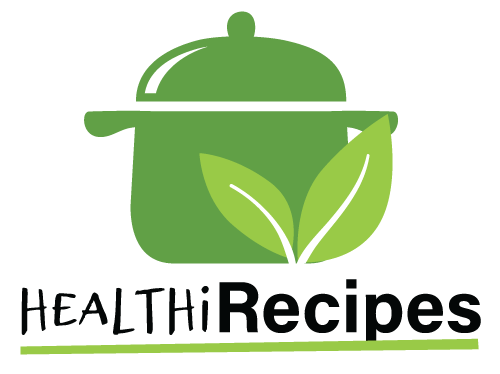Venison roast recipe, the meat from deer, is a culinary treasure known for its rich flavor and lean quality. Unlike traditional meats like beef or pork, a venison roast recipe is lower in fat and calories, making it a healthier option for meat lovers. This unique meat not only offers a distinct taste but also provides numerous nutritional benefits, making it a favorite among those who appreciate gourmet cooking.
Table of Contents
1. Venison Roast Recipe: What Makes It Unique?
Nutritional Benefits of Venison Roast Recipe
One of the standout features of a venison roast recipe is its impressive nutritional profile. It is high in protein, essential for muscle repair and growth, and contains significant amounts of iron, which is vital for oxygen transport in the blood. Additionally, a venison roast recipe is rich in B vitamins, particularly B6 and B12, which play crucial roles in energy metabolism and brain function. With its lower saturated fat content compared to beef, a venison roast recipe is a heart-friendly choice that allows you to indulge without guilt.
Choosing the Right Cut for Roasting
Selecting the right cut of venison roast is crucial for a successful dish. Popular cuts include the loin, leg, and shoulder, each offering unique flavors and textures. The loin is often considered the most tender cut, making it perfect for quick roasting. The leg, while slightly tougher, is ideal for slow cooking, allowing the meat to become tender and flavorful over time. The shoulder, rich in connective tissue, benefits from long, slow cooking methods, making it perfect for stews or braises. Understanding these cuts will help you choose the best option for your venison roast.
2. Preparing Your Venison Roast
Preparation is key to achieving a mouthwatering venison roast. From selecting the right ingredients to marinating the meat, each step plays a vital role in enhancing the overall flavor and tenderness of the dish.
Essential Ingredients for a Perfect Roast
To create a delicious venison roast, you’ll need a few essential ingredients. Start with a high-quality cut of venison roast, ensuring it is fresh and well-trimmed. For a flavorful marinade, consider using garlic, rosemary, thyme, and olive oil. These ingredients not only enhance the taste but also help tenderize the meat, ensuring a juicy and succulent venison roast. Adding a splash of red wine or balsamic vinegar can further deepen the flavor profile, making your venison roast even more delectable.
Marinating Venison for Enhanced Flavor
Marinating venison is an excellent way to infuse it with flavor and tenderness. A simple marinade can be made with olive oil, red wine, minced garlic, and a mix of fresh herbs like rosemary and thyme. Allow the venison to marinate for at least a few hours, or ideally overnight, to let the flavors penetrate the meat. This step is crucial for achieving a roast that is both flavorful and tender. The acidity in the marinade helps break down the muscle fibers, resulting in a more enjoyable eating experience.
3. Cooking Techniques for Venison Roast
Once your venison roast is marinated and ready, it’s time to explore the best cooking techniques to ensure a perfect roast. The method you choose can significantly impact the final result, so understanding your options is essential.
Best Cooking Methods for Tender Venison
There are several effective cooking methods for venison roast, each offering unique benefits. Firstly, roasting in the oven is a popular choice, as it allows for even cooking and a beautifully browned exterior. Alternatively, for a more rustic approach, consider using a slow cooker or Dutch oven, which can yield incredibly tender results. Sous vide cooking is another excellent option, as it allows for precise temperature control, ensuring that the meat is cooked to perfection without the risk of overcooking.
How Long to Cook a Venison Roast?
The cooking time for a venison roast can vary, of course, depending on the cut and the cooking method used. As a general guideline, a venison loin should be roasted at 375°F (190°C) for about 20 minutes per pound for medium-rare doneness. On the other hand, for tougher cuts like the leg or shoulder, slow cooking for several hours at a lower temperature (around 250°F or 120°C) is recommended. Additionally, always use a meat thermometer to check for doneness; the internal temperature should reach 130°F (54°C) for medium-rare. Allow the roast to rest for at least 10 minutes before slicing to ensure the juices redistribute, resulting in a moist and flavorful dish.
4. Cooking Techniques for Venison Roast

Once your venison is marinated and ready, it’s essential to choose the right cooking techniques to ensure a perfect roast. The method you select can significantly impact the final flavor and texture of the meat.
Best Cooking Methods for Tender Venison
There are several effective cooking methods for venison roast, each offering unique benefits.
- Oven Roasting: This is the most common method for cooking venison. Preheat your oven to 375°F (190°C). Place the marinated venison in a roasting pan and cook until it reaches the desired internal temperature. This method allows for even cooking and a beautifully browned exterior.
- Slow Cooking: For tougher cuts like the leg or shoulder, slow cooking is ideal. Using a slow cooker or Dutch oven, you can cook the venison at a low temperature for several hours. This method breaks down the connective tissues, resulting in tender, flavorful meat.
- Sous Vide Cooking: This technique involves vacuum-sealing the venison and cooking it in a water bath at a precise temperature. Sous vide cooking ensures that the meat is cooked evenly and retains its moisture, making it incredibly tender. After sous vide cooking, a quick sear in a hot pan can add a delicious crust.
- Grilling: If you prefer a smoky flavor, grilling is an excellent option. Preheat your grill and cook the venison over medium-high heat. This method works well for smaller cuts like steaks or chops, allowing for a quick cook time while maintaining juiciness.
How Long to Cook a Venison Roast?
The cooking time for a venison roast can vary based on the cut and cooking method. Here are some general guidelines:
- Venison Loin: Roast at 375°F (190°C) for about 20 minutes per pound for medium-rare doneness. The internal temperature should reach 130°F (54°C).
- Venison Leg: For a leg roast, slow cook at 250°F (120°C) for 4 to 6 hours, or until the meat is tender and easily pulls apart.
- Venison Shoulder: Similar to the leg, the shoulder benefits from slow cooking. Cook at a low temperature for 6 to 8 hours for the best results.
Always use a meat thermometer to check for doneness. After cooking, let the roast rest for at least 10 minutes before slicing. This allows the juices to redistribute, ensuring a moist and flavorful dish.
Serving Suggestions and Pairings
Once your venison roast is perfectly cooked, it’s time to think about serving suggestions and pairings that will elevate your meal.
5. Ideal Side Dishes for Venison Roast
Venison pairs beautifully with a variety of side dishes. Here are some excellent options:
- Roasted Root Vegetables: Carrots, parsnips, and sweet potatoes roasted with olive oil and herbs complement the rich flavor of venison.
- Garlic Mashed Potatoes: Creamy mashed potatoes infused with garlic provide a comforting contrast to the robust meat.
- Sautéed Greens: Lightly sautéed greens, such as spinach or kale, add a fresh element to the plate.
- Wild Rice Pilaf: A nutty wild rice pilaf with mushrooms and herbs can enhance the earthy flavors of the venison.
Wine Pairings to Complement Your Meal
When it comes to wine pairings, a robust red wine is an excellent choice to accompany venison. Here are some recommendations:
- Cabernet Sauvignon: Its bold flavors and tannins complement the richness of the meat.
- Merlot: A softer red that pairs well with the gamey notes of venison.
- Syrah/Shiraz: This wine offers spicy and fruity notes that can enhance the overall dining experience.
If you prefer white wine, a full-bodied Chardonnay can also work well, especially if your roast is prepared with a creamy sauce.
6. Additional Cooking Tips for Perfect Venison Roast

Cooking venison can be a rewarding experience, but it does come with its own set of challenges. Here are some additional tips to ensure your venison roast turns out perfectly every time.
Resting the Meat
After cooking, it’s crucial to let your venison roast rest. This step allows the juices to redistribute throughout the meat, resulting in a more flavorful and moist roast. Aim to let it rest for at least 10 to 15 minutes before slicing. Cover the roast loosely with aluminum foil to keep it warm during this time.
Searing for Flavor
For an extra layer of flavor, consider searing your venison roast before cooking it in the oven or slow cooker. Heat a bit of oil in a skillet over high heat and sear the meat on all sides until browned. This caramelization adds depth to the flavor and creates a beautiful crust.
Using a Meat Thermometer
To achieve the perfect doneness, invest in a good meat thermometer. Venison is best enjoyed medium-rare, with an internal temperature of about 130°F (54°C). For medium, aim for 140°F (60°C). Remember that the temperature will continue to rise slightly while the meat rests, so remove it from the heat a few degrees before it reaches your target.
Troubleshooting Common Issues
Even experienced cooks can encounter challenges when preparing venison. Here are some common issues and how to address them.
Overcooking
One of the most common mistakes, in fact, is overcooking venison, which can lead to dry, tough meat. To prevent this issue, always use a meat thermometer and keep a close eye on the cooking time. If, however, you find that your roast is overcooked, consider slicing it thinly and serving it with a flavorful sauce or gravy in order to add moisture.
Gamey Flavor
Some people find venison to have a strong gamey flavor. If you’re concerned about this, marinating the meat can help. Use acidic ingredients like vinegar or citrus juice in your marinade to balance the flavors. Additionally, cooking with aromatic herbs and spices can mask any overly gamey notes.
Tough Texture
If your venison roast turns out tough, it may be due to the cut of meat or cooking method. Tougher cuts, like the leg or shoulder, benefit from slow cooking methods that break down the connective tissues. If you’re using a tender cut, ensure you don’t overcook it, as this can also lead to a chewy texture.
Sauces and Gravies
A delicious sauce can elevate your venison roast to new heights. Consider making a red wine reduction sauce by deglazing the roasting pan with red wine and simmering it until thickened. Alternatively, a creamy mushroom sauce can add richness and complement the meat beautifully.
Garnishes
Don’t forget about garnishes! Fresh herbs like parsley or thyme can add a pop of color and freshness to your dish. A sprinkle of coarse sea salt just before serving can enhance the flavors and provide a delightful crunch.
Leftover Ideas
If you have leftovers, don’t let them go to waste! Shred the meat and use it in tacos, sandwiches, or salads. Venison chili is another fantastic way to repurpose leftover roast, adding beans, tomatoes, and spices for a hearty meal.
7. FAQs About Venison Roast
How long do you cook a venison roast for?
Cooking time varies by cut. Generally, roast at 375°F (190°C) for 20 minutes per pound for medium-rare.
How do you cook venison so it’s tender?
Marinating and slow cooking are key. Use acidic ingredients in your marinade and cook at low temperatures.
Which is the best way to cook venison?
Oven roasting, slow cooking, and sous vide are all excellent methods, depending on the cut.
How to cook roast venison Jamie Oliver?
Jamie Oliver often recommends marinating the meat and using a high-heat roast followed by resting for optimal flavor and tenderness.
Conclusion
In conclusion, the venison roast recipe is a delightful way to enjoy the unique flavors of deer meat. This dish is perfect for gatherings and pairs wonderfully with sides like Swamp Soup or Seafood Boil Sauce, which can complement the rich taste of the roast. For those looking for a slow-cooked version, check out AllRecipes for a recipe that highlights the convenience of using a slow cooker. Embrace the flavors of the wild and enjoy a meal that brings people together. With its tender texture and robust seasoning, venison roast is sure to become a favorite in your home. Whether served at a holiday feast or a cozy family dinner, this dish will leave a lasting impression on your guests and create cherished memories around the table!

